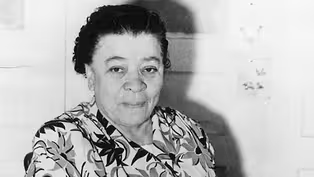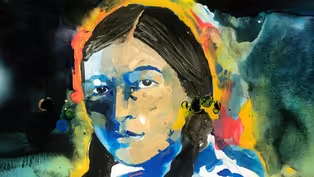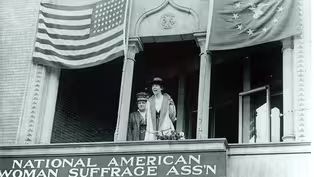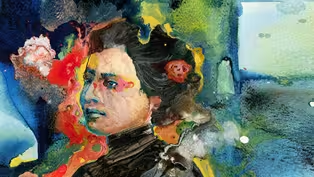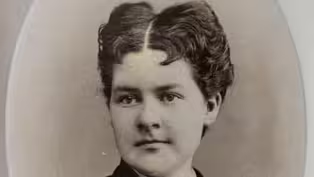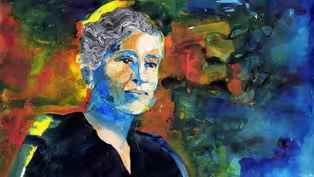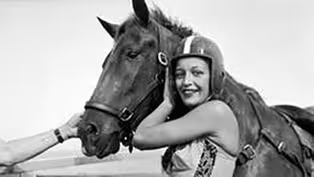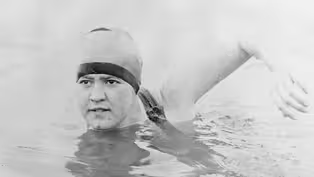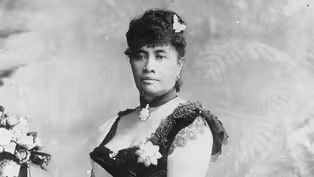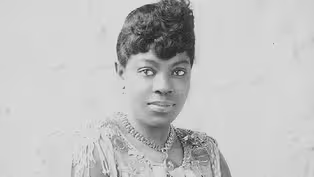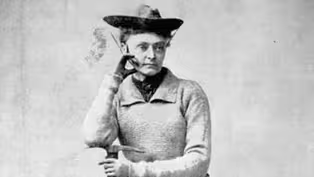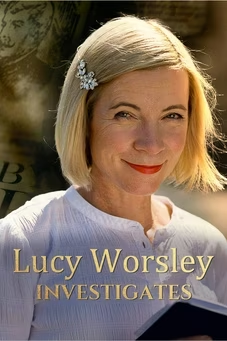
The First Woman to Lead Arctic Expeditions
Special | 10mVideo has Closed Captions
Louise Arner Boyd was the first American woman to lead arctic expeditions.
Louise Arner Boyd was a self-taught polar scientist and photographer, and the first American woman to lead Arctic expeditions, where she mapped uncharted regions of Greenland, creating photographs that provide critical information to climate change researchers today.
Problems playing video? | Closed Captioning Feedback
Problems playing video? | Closed Captioning Feedback
Support for American Masters is provided by the Corporation for Public Broadcasting, AARP, Rosalind P. Walter Foundation, Judith and Burton Resnick, Blanche and Hayward Cirker Charitable Lead Annuity Trust, Koo...

The First Woman to Lead Arctic Expeditions
Special | 10mVideo has Closed Captions
Louise Arner Boyd was a self-taught polar scientist and photographer, and the first American woman to lead Arctic expeditions, where she mapped uncharted regions of Greenland, creating photographs that provide critical information to climate change researchers today.
Problems playing video? | Closed Captioning Feedback
How to Watch American Masters
American Masters is available to stream on pbs.org and the free PBS App, available on iPhone, Apple TV, Android TV, Android smartphones, Amazon Fire TV, Amazon Fire Tablet, Roku, Samsung Smart TV, and Vizio.
Buy Now
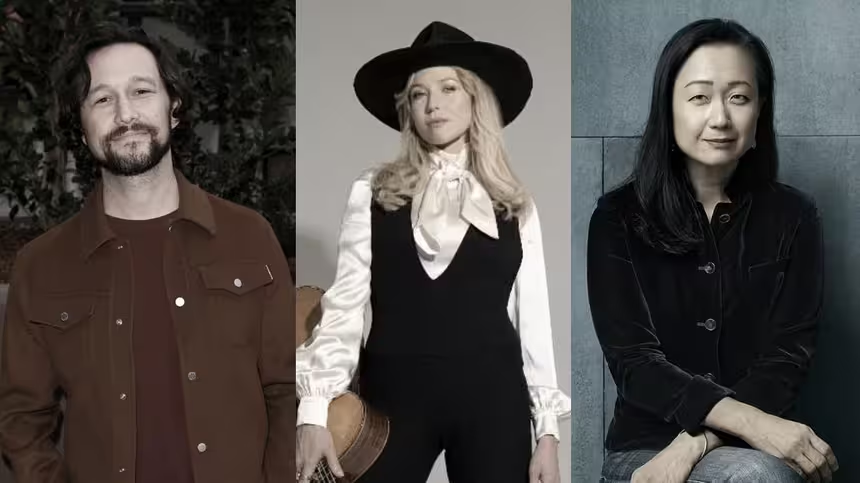
A front row seat to the creative process
How do today’s masters create their art? Each episode an artist reveals how they brought their creative work to life. Hear from artists across disciplines, like actor Joseph Gordon-Levitt, singer-songwriter Jewel, author Min Jin Lee, and more on our podcast "American Masters: Creative Spark."Providing Support for PBS.org
Learn Moreabout PBS online sponsorshipMore from This Collection
Illuminating the stories of extraordinary American heroines from the early years of feminism, American Masters — Unladylike2020 presents 26 digital short films featuring courageous, little-known and diverse female trailblazers from the turn of the 20th century.
The First Black Woman to Run for Vice President of The U.S.
Video has Closed Captions
Charlotta Bass was the first Black woman to run for Vice President of the United States. (12m 32s)
Zitkála-Šá: Trailblazing American Indian Composer and Writer
Video has Closed Captions
Zitkála-Šá co-composed and wrote the libretto for the first American Indian opera. (11m 39s)
Jeannette Rankin: The First Woman Member of U.S. Congress
Video has Closed Captions
Jeannette Rankin made history as the first woman elected to the U.S. Congress. (12m 38s)
Jovita Idar: Mexican American Activist and Journalist
Video has Closed Captions
Jovita Idar was a Latina journalist who worked for an end to segregation and racism. (11m 8s)
Martha Hughes Cannon: The First Woman State Senator
Video has Closed Captions
Martha Hughes Cannon was a historic state senator and public health pioneer. (12m 23s)
She was a Civil Rights Activist and Co-Founder of the NAACP
Video has Closed Captions
Mary Church Terrell was a suffragist, civil rights activist and co-founder of the NAACP. (11m 53s)
She was a Daredevil Performer & Advocate for the Blind
Video has Closed Captions
Sonora Webster Carver (1904-2003) was one of the most famous horse divers in the world. (10m 2s)
She was the First Woman to Swim Across the English Channel
Video has Closed Captions
Gertrude Ederle made history in 1926 as the first woman to swim across the English Channel (11m 54s)
Queen Lili‘uokalani - The First and Last Queen of Hawai‘i
Video has Closed Captions
Queen Lili‘uokalani was the first sovereign queen, and the last monarch of Hawai'i. (12m 14s)
Sissieretta Jones was a Trailblazing Black Opera Singer
Video has Closed Captions
Sissieretta Jones was the first Black woman to headline a concert at Carnegie Hall. (11m 5s)
The First American Indian Doctor
Video has Closed Captions
Susan La Flesche Picotte became the first American Indian woman doctor. (11m 37s)
Annie Smith Peck: Record-Breaking Mountaineer
Video has Closed Captions
She was a record-breaking mountaineer, educator and suffragist. (10m 40s)
Providing Support for PBS.org
Learn Moreabout PBS online sponsorshipShe was a trailblazer who had courage, bravery, and curiosity and became one of the most knowledgeable people on the planet of the Arctic region.
1906 San Francisco, California.
19-year-old Louise Arner Boyd witnessed her hero, Norwegian explorer Roald Amundsen, completing the first sea voyage through the Northwest passage.
There was still a lot of unknown areas on the map.
And the special excitement was the poles.
That was in everyone's imagination, the farthest least accessible place.
You had Cook and Peary racing for the North Pole.
And Scott and Amundsen racing for the South Pole.
These were like the rock stars of that era.
"The charm and infinite diversity of the Arctic is its own reward.
I have got the Arctic lure and will certainly go North."
Louise Arner Boyd was born in 1887 in San Rafael, California.
Her father made his fortune during the Gold Rush.
Louise was born into a family with lots and lots of money.
She went to very good schools and she was well trained in the social graces.
But said herself that she was a tomboy - followed her brothers everywhere and tried to do everything that they did.
Horseback riding, hunting, hiking.
But then her brothers both died in their teens and suddenly Louise became an only child.
After her parents died when she was 32, Boyd decided to use her inheritance to pursue her childhood dream of exploring the Arctic.
She saw for the first time the Arctic block, and she was fascinated.
Everything was just white sparkling crystals and it was the most beautiful sight you could ever imagine.
"Far north, hidden behind grim barriers of pack ice, are lands that hold one spellbound.
One enters another world where men are insignificant amid the awesome immensity of mountains, fjords, and glaciers."
There have been women explorers from the late 1800s, but it was so against what was expected of them socially.
Women were meant to be home taking care of family and husband.
So for women who wanted to do more than that, it required a huge amount of bravery and perseverance.
When you think of all the additional challenges and all the additional hurdles that they had.
It's dangerous to try to climb a mountain in petticoats.
Women were hard to find in polar science even up in through the early '90s.
I'm Twila Moon and I'm a glaciologist.
So I study large ice on Earth, and I spend my time mostly focused on Greenland, understanding how the ice sheet moves, mostly retreating now in the modern day.
And how that change in the ice sheet is interacting and responding to climate change.
In 1926, hiring her own ship and crew, Boyd became the first woman to lead an expedition to the polar seas.
Originally, her desire to go to the Arctic was more for adventure.
She became a big game hunter and killed several polar bears on her own.
"My brain left all of me that was feminine behind on the ship, and with a rifle over my shoulder, I set out, bound on proving I belonged there just as much as the men!"
Today certainly to think, oh my goodness, they were actually killing these polar bears.
But in that day and age, it was very respected.
That was a period when the natural museums came into being.
To show people who would never have the chance to travel to other parts of the world, what animals existed.
So a number of the trophies, were being brought back, stuffed and put into settings that depicted their natural surroundings.
In 1928, when her childhood hero Amundsen and his team disappeared at sea, Boyd participated in the 10-week rescue mission.
"How could I go on a pleasure trip when those 22 lives were at stake?
I want to do something worthwhile, of which I can be proud."
Although no conclusive trace of Amundsen and his team were ever found, Boyd was awarded honors for her efforts.
Throughout the 1930s, Boyd partnered with the American Geographical Society to explore uncharted regions, and led several expeditions that generated new data in the fields of geology, oceanography, botany, and glaciology.
She brought numbers of scientists with her to come and study and help interpret what she saw.
Having spent time in the Arctic and Antarctica, I can't even imagine what it was like back then without all the special equipment that we have today.
The conditions are extremely brutal.
The temperatures are unbelievable.
You can't expose any part of your body for more than a couple seconds.
"I revel in the cold.
I'm reproached sometimes for wearing out the crew, but they haven't suffered yet.
There is never any hardship in doing what you are interested in."
On her travels, Boyd met Inuit, the indigenous people of Greenland.
She also served as the official photographer of her expeditions, documenting ice patterns along the Greenland coast.
"I load the cameras on board the ship in a very small dark room.
During fieldwork, I use a light-proof changing bag of my own devising."
These innovations allowed Boyd to process her work and get scientific results on the spot.
She also pioneered the use of Photogrammetry, the science of taking photographs to create models or maps.
Louise was really at the cutting edge of science.
She was able not just to map the ice, but also map the depths of the fjords and the ocean areas that she was traveling.
And certain territories were actually named after her.
Having direct photographic evidence helps us look at where the ice edge was, how thick the ice was, and be able to compare that to photographs that we can take today.
So those are really important records and archives.
In 1938, Boyd was awarded a medal from the American Geographical Society, and became one of the first women to autograph their Explorers Globe, signed by the major explorers and aviators of the 20th century.
This was a huge step for her.
Because then she was recognized in the scientific circles.
But gaining the respect of her male crew in the field, proved more difficult.
"The greatest handicap I have is being a woman, which caused many to look upon me as not worthy to be included in the scientific world.
In many cases, I have had far more actual experience than those so-rated scientists."
Boyd returned to the Arctic one last time in 1955, when she chartered an airplane and became the first woman to fly over the North Pole.
"North, North, North, we flew.
Then, in a moment of happiness which I shall never forget, our instruments told me we were there.
Directly below us, lay the North Pole!"
Boyd died in 1972, two days before 85th birthday, requesting that her ashes be scattered in the Arctic Ocean.
What we're seeing in the Arctic today is that the ice shelves are eroding, the glaciers are melting, and the water tables are rising.
So, because of the work that this pioneering woman did, it's given scientists a much clearer understanding of what is happening with climate change.
"People openly told me the Arctic was a place only for men - that for me to go where I did was not to be taken seriously.
Determination and persistence brought me to the position I achieved."
Support for PBS provided by:
Support for American Masters is provided by the Corporation for Public Broadcasting, AARP, Rosalind P. Walter Foundation, Judith and Burton Resnick, Blanche and Hayward Cirker Charitable Lead Annuity Trust, Koo...

